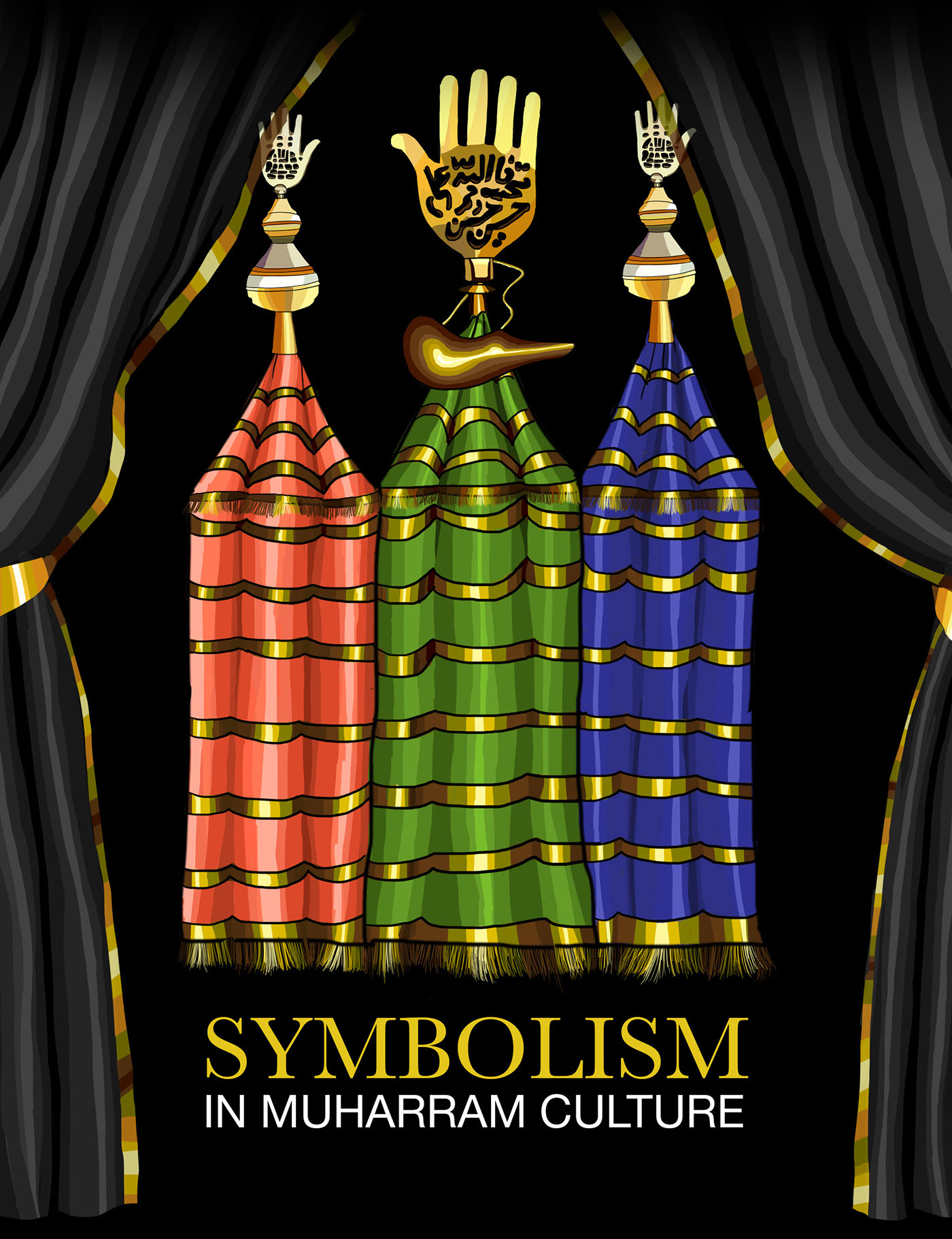
BACKGROUND
Rituals and symbolism have always been a great source of inspiration in all the major religions, cultures and customs of the world.
Throughout the history we have seen that tragedy has been a great source of inspiration in the creation of different kinds of literature, Arts and Architecture.
In literature, works like Hamlet sets a great example of how tragedy inspired people like Shakespeare in writing. Many artworks in the world are based on the stories of heroes, war, sacrifice and courage. Till this date on many public squares and across city streets we see monuments, landmarks, roads, parks created on the name of different personalities, to show respect to the personalities and their cause.
Similarly, the first month of Lunar calender is associated with Hussain bin Ali. In a period of more than thousand years a number of customs and traditions have developed around this tragedy.
Started from Iraq, the culture of Muharram has elements from different eras which include Buwahid Dynasty in Iraq, Safavids and Qajars in Iran and Mughals, Nawabs of Awad and Hydrabad in India. These elements all together have given Muharram culture a unique visual identity. This visual identity is highly associated with symbolism, which is a form of art in itself.
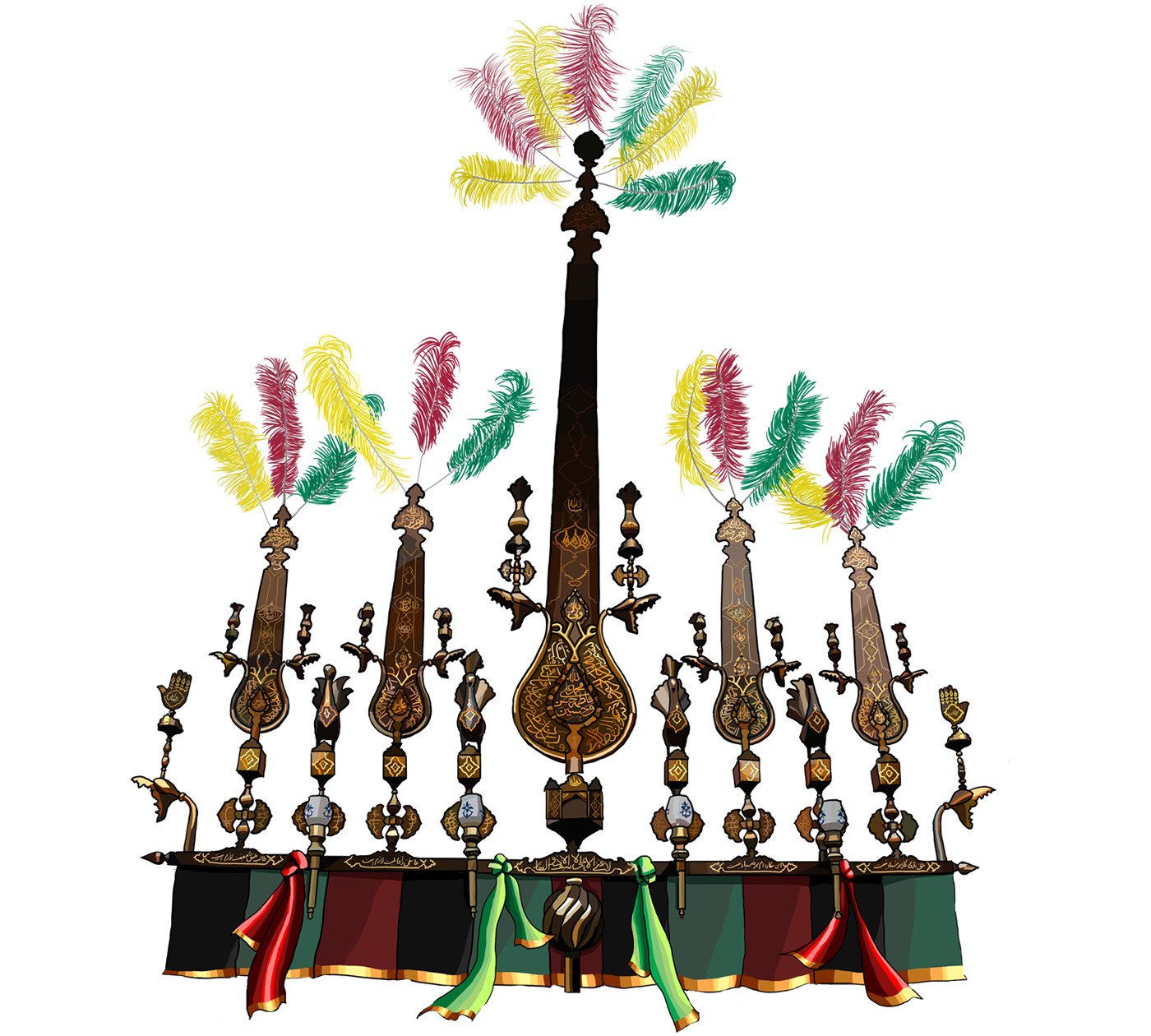
TUQ
In its most common shape, a Tuq used in modern Muharram rituals in Iran comprises essentially of three parts a strong metallic staff provided with a horizontal metallic bar which gives to the assembly the appearance of a cross.
A spearhead blade fixed on top of the central staff flanked by metal buds on either sides, while smaller spearhead blades fixed on the cross-bar usually flank the central one.
A spearhead blade fixed on top of the central staff flanked by metal buds on either sides, while smaller spearhead blades fixed on the cross-bar usually flank the central one.
The cross is decorated with animal representations (peacocks, doves, hybrids etc).
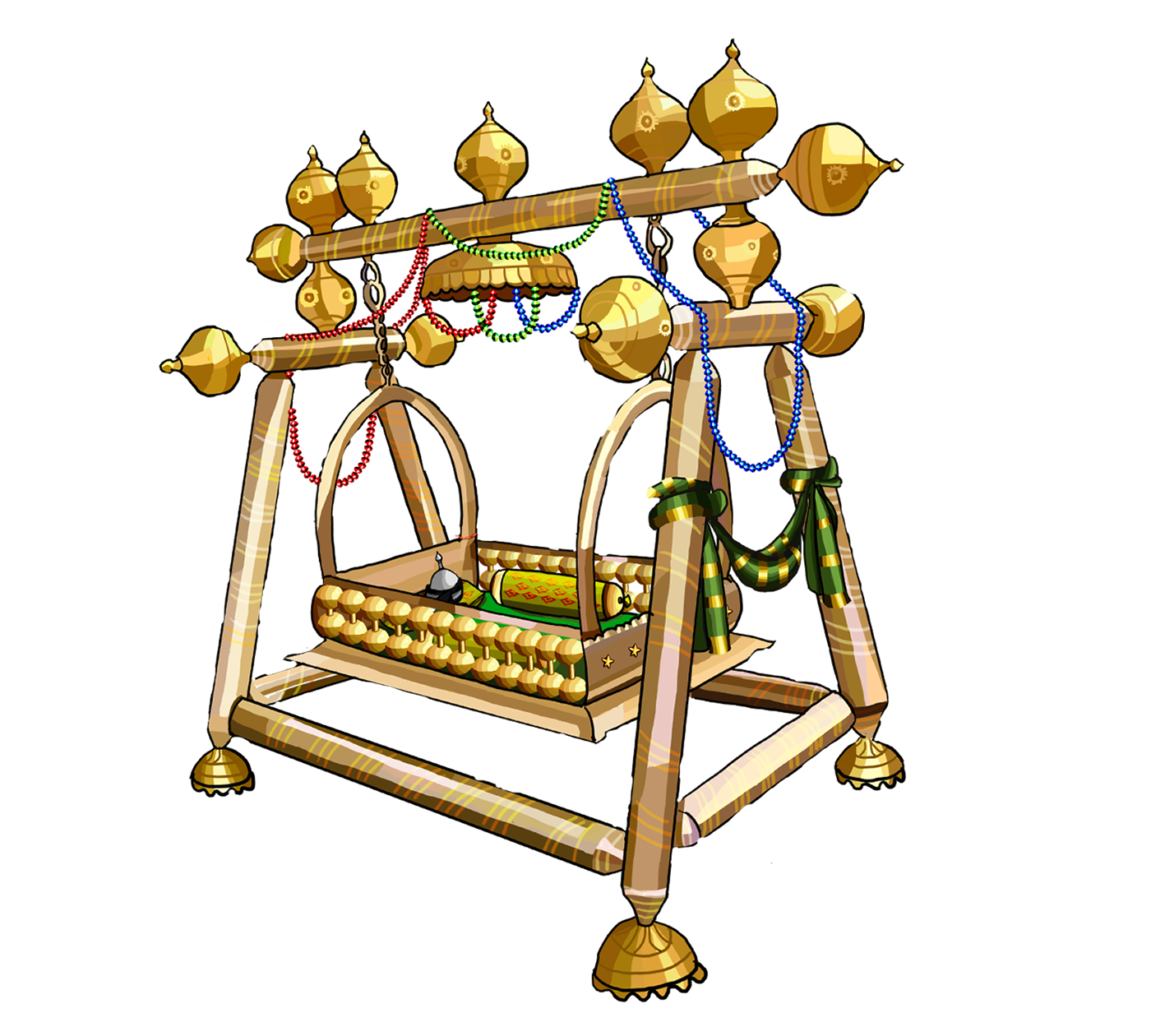
JHOOLA
The culture of Gehwara is very famous in South Asia,
these Gehwaras have no specific shape, in old days they were mostly made of wood and decorated with net clothes and baubles, the metal made gehwaras with glidings, however, have gained much popularity in last few years.
these Gehwaras have no specific shape, in old days they were mostly made of wood and decorated with net clothes and baubles, the metal made gehwaras with glidings, however, have gained much popularity in last few years.
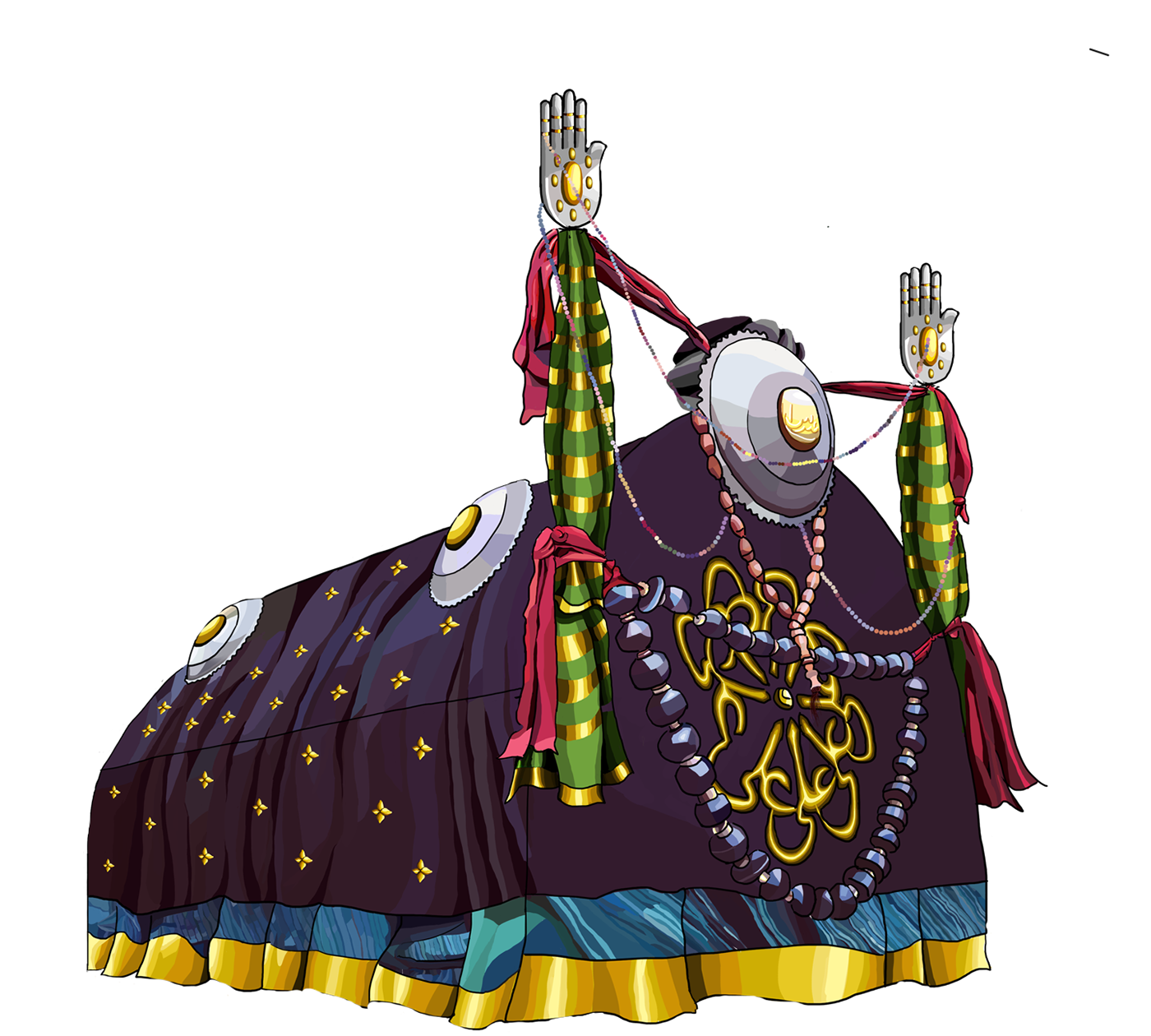
TABOOT
Taboot unlike an oridinary coffin is an ornamented structure; mostly, it is a box like structure, its front side has two Alams; which suggest that it is not an ordinary coffin. The top front also has a turban; a turban in Islamic culture is considered to be a sign of respect.
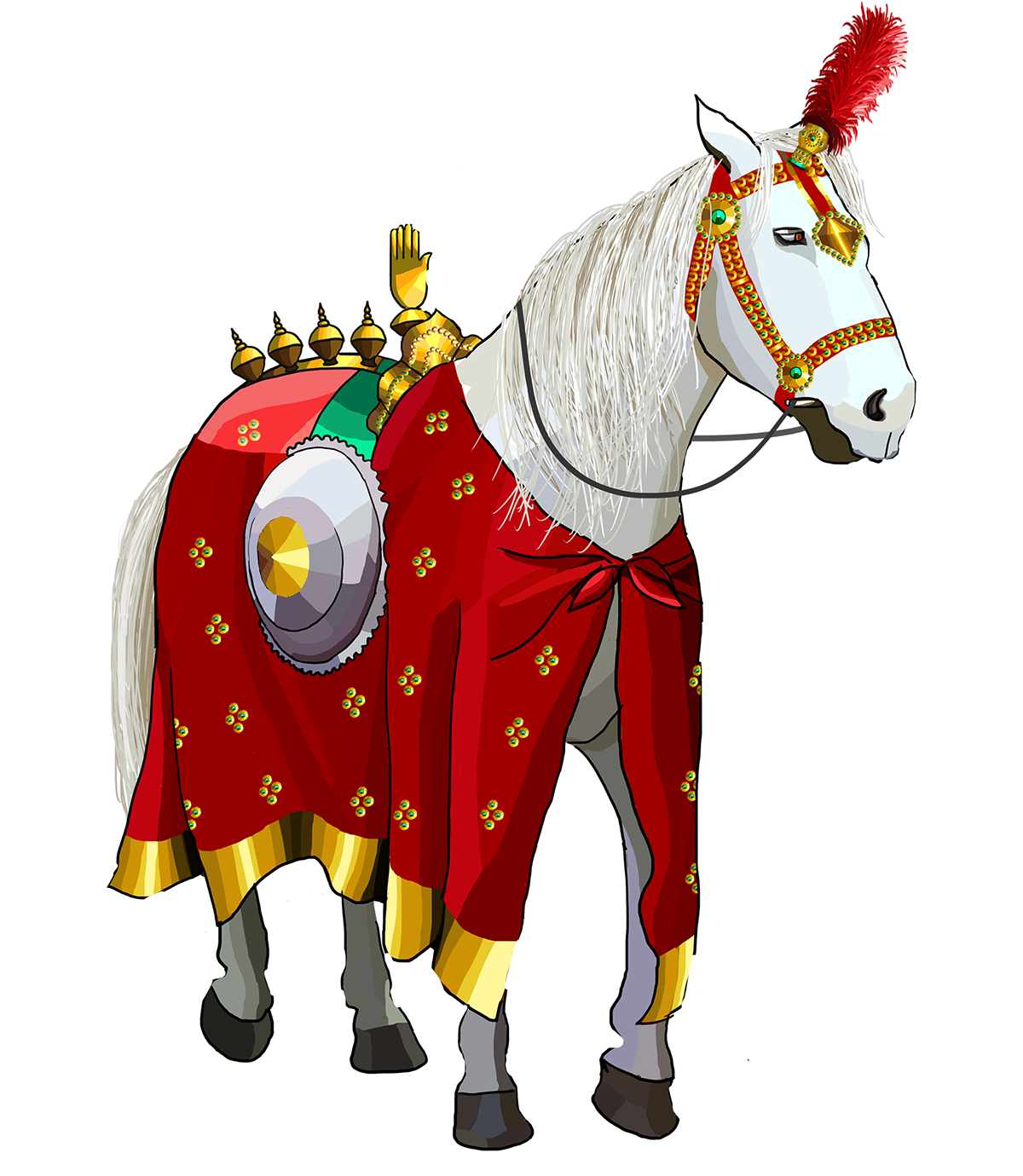
ZULJANNAH
The replica of Zuljinnah is ornamented with different jewelries and chadors; the saddle mostly has a turban with Panja (hand) on its top. From the saddle till the tail there are top like structures made of gold or silver, these tops in old days acted as protectors and prevented the enemies from jumping on to the horse from its back side.
The Zuljinnahs are always covered with expensive chadors made of velvet or silk, which are ornamented with gold or silver sequins.
The Zuljinnahs are always covered with expensive chadors made of velvet or silk, which are ornamented with gold or silver sequins.

NAKHL
A Nakhl is a 3-demensional structure of interwoven wooden frames which looks more like a leaf of a cypress tree.
During Ashura they are covered with black banners of different sizes and shapes, the banners have a lot of calligraphy written in white as well as embroidered with neon color threads, this text glorifies the personalities of the household of Muhammad. The centre of the Nakhl has an image of the Shrine of Hussain. The decorations are made with mirrors, daggers and Alams.
During Ashura they are covered with black banners of different sizes and shapes, the banners have a lot of calligraphy written in white as well as embroidered with neon color threads, this text glorifies the personalities of the household of Muhammad. The centre of the Nakhl has an image of the Shrine of Hussain. The decorations are made with mirrors, daggers and Alams.
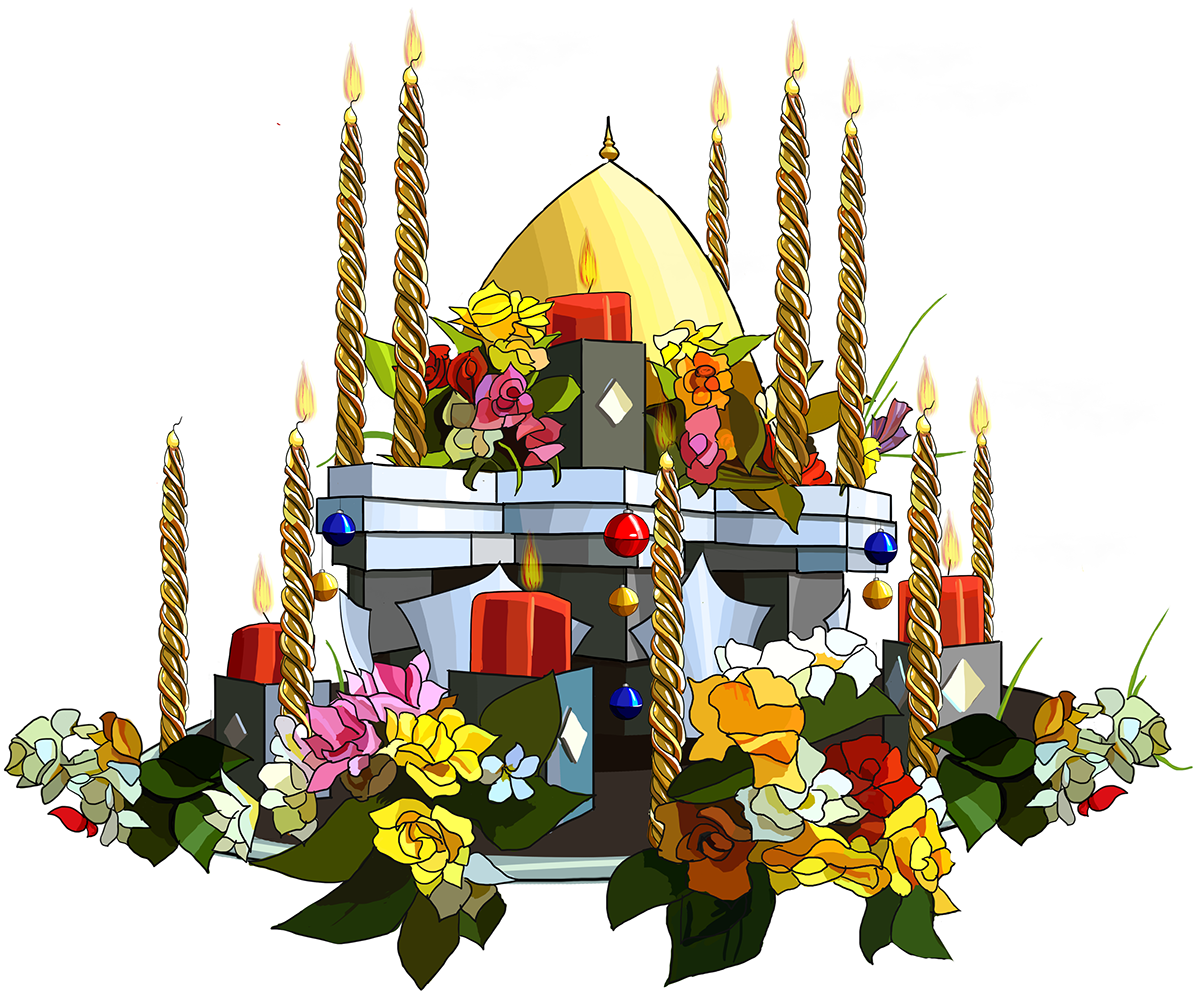
ZUFFAH
The Zuffah of Qasim includes higly adorned Tashts (trays) and platters which are ornamented with different frills and gilds.
A tasht has candles of different kinds, colorful baubles, fresh flowers, mirrors and sweets.
The Zuffah of Qasim includes higly adorned Tashts (trays) and platters which are ornamented with different frills and gilds.
A tasht has candles of different kinds, colorful baubles, fresh flowers, mirrors and sweets.

TAZIYA
Taziyas are extraordinary, highly embellished, 3-dimensional structures; most of them have no resemblance with the actual Tomb of Hussain. The Tazias vary in sizes from big to small. Big Taziyas contrary to their appearance are lighter in weight so it becomes easy to carry or wheel them during the processions. To make it lighter the inner structure of a Taziya is made of bamboo sticks covered with tinsel. Different kinds of colorful papers, silver sheets are used for the ornamentation and designing of Taziyas. The contemporary Taziyas are built with plastic and styrotex, they also have baubles hanging on the arches.
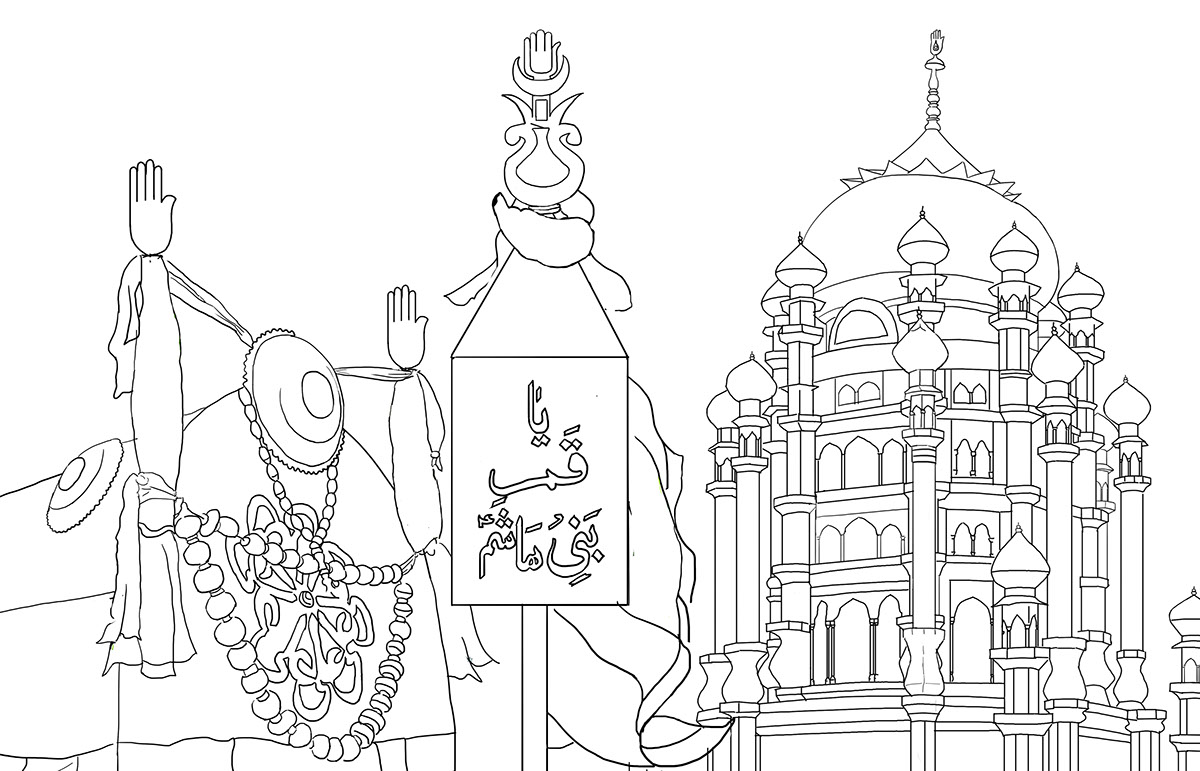

BOOK DESIGN

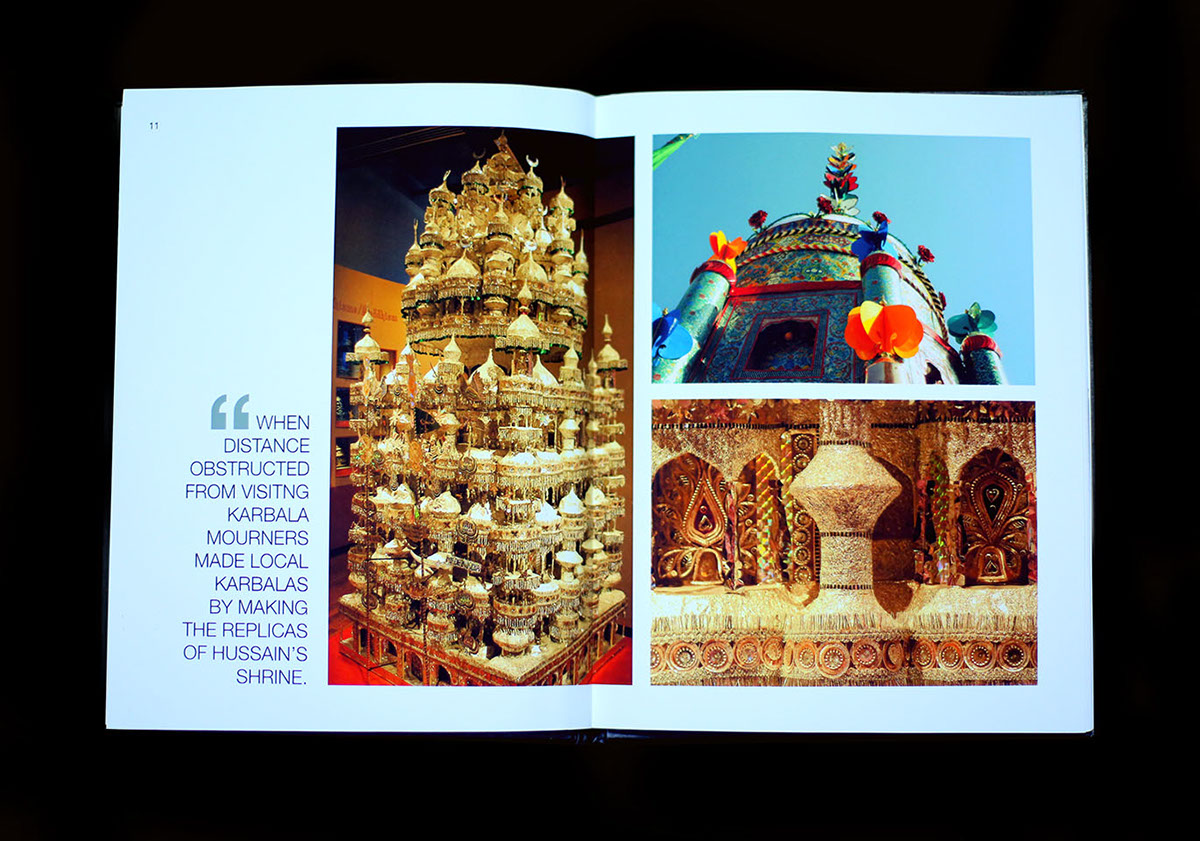



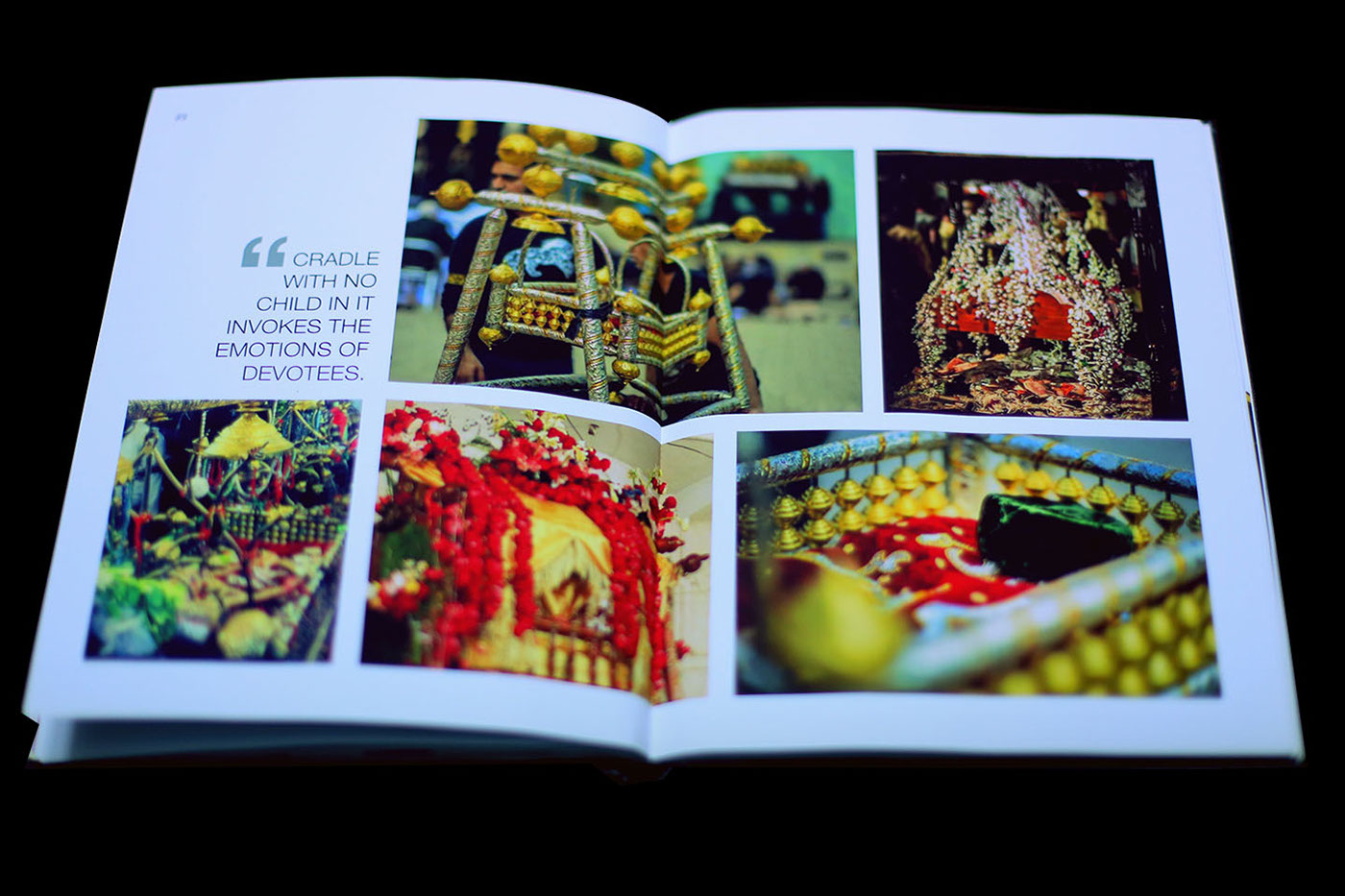


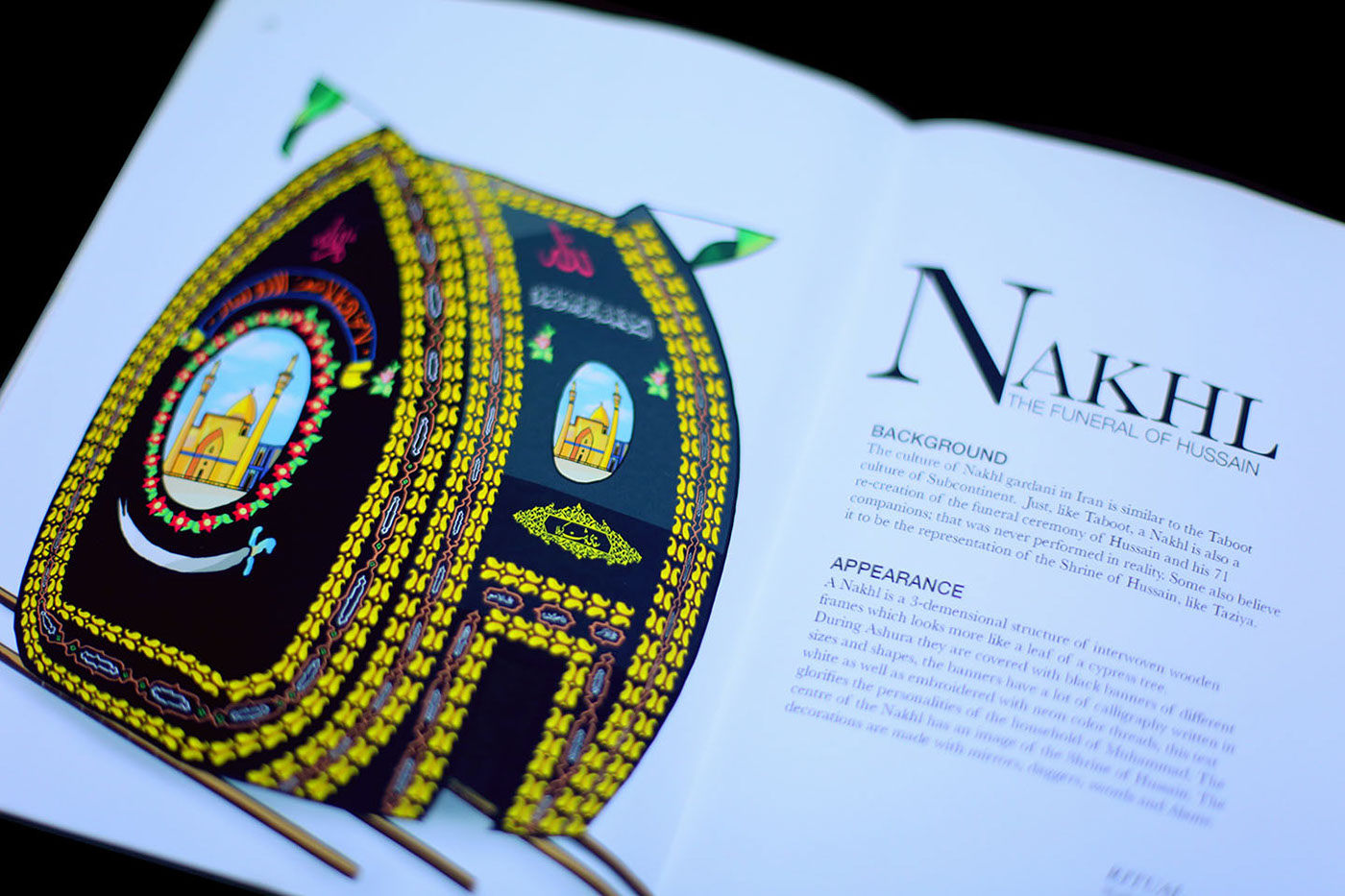
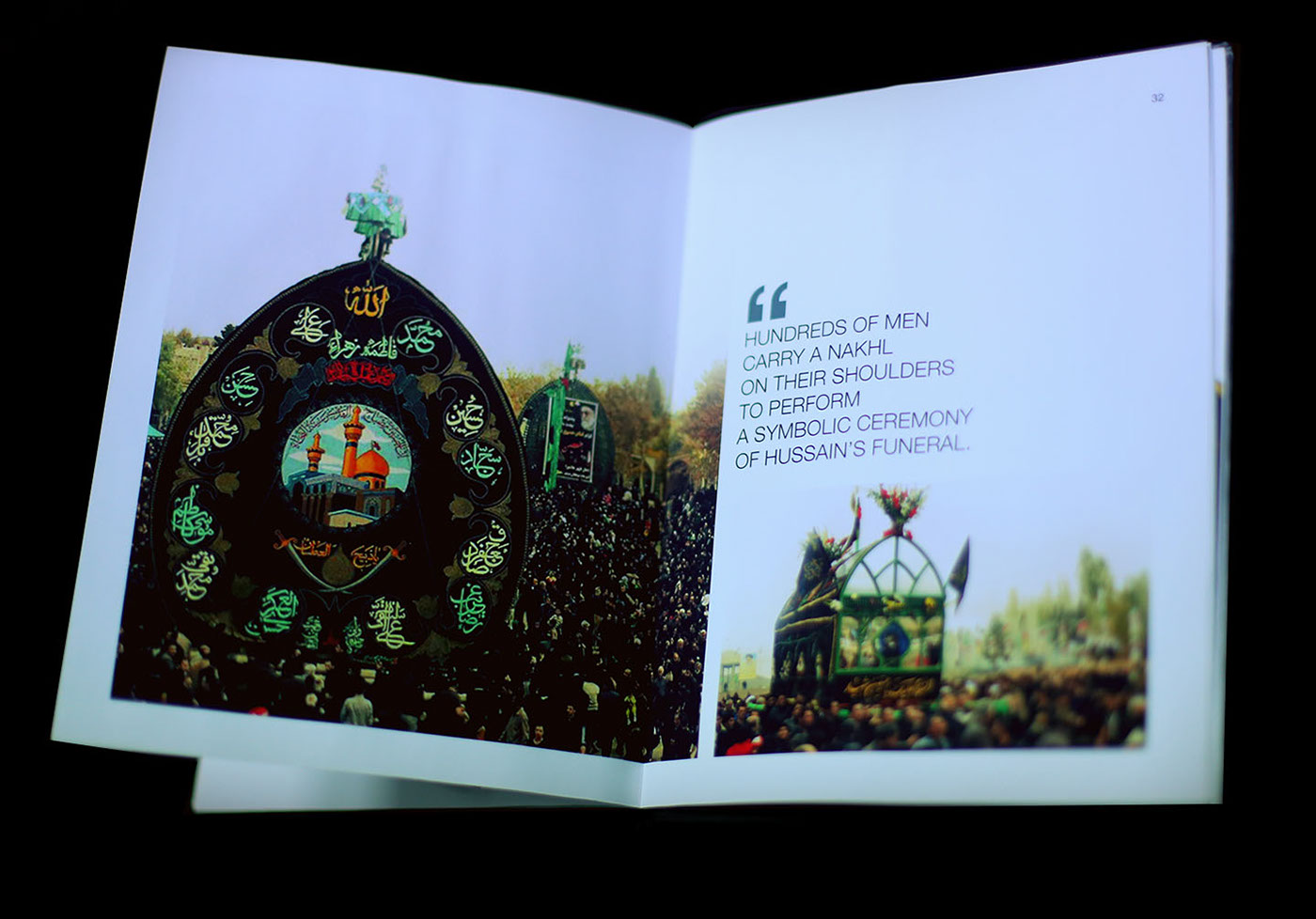




EVOLUTION OF ALAM
Along with other symbols Alam also changed its form with time.
The modern form of Alam has elements from the Alams of different eras.
In Hyderabad Deccan the oldest Alam is known as “Bibi Ka Alam”. It’s Panja is made of gold and it is decorated with blings and flowers.The Amrohavi form of Alam is known as “Talwaar ka Alam”, this Alam seems like a spear and it is decorated with expensive flowers and dry fruits.
Lakhnawi Alam or more commonly known as the Indian Alam is comprised of a Panja which is made of Silver and a plaque called Patka, this Patka is made of famous Indian cloth ‘Jamawaar’, it is also embroided with silver thread.
The modern form of Alam has elements from the Alams of different eras.
In Hyderabad Deccan the oldest Alam is known as “Bibi Ka Alam”. It’s Panja is made of gold and it is decorated with blings and flowers.The Amrohavi form of Alam is known as “Talwaar ka Alam”, this Alam seems like a spear and it is decorated with expensive flowers and dry fruits.
Lakhnawi Alam or more commonly known as the Indian Alam is comprised of a Panja which is made of Silver and a plaque called Patka, this Patka is made of famous Indian cloth ‘Jamawaar’, it is also embroided with silver thread.

THANK YOU!










